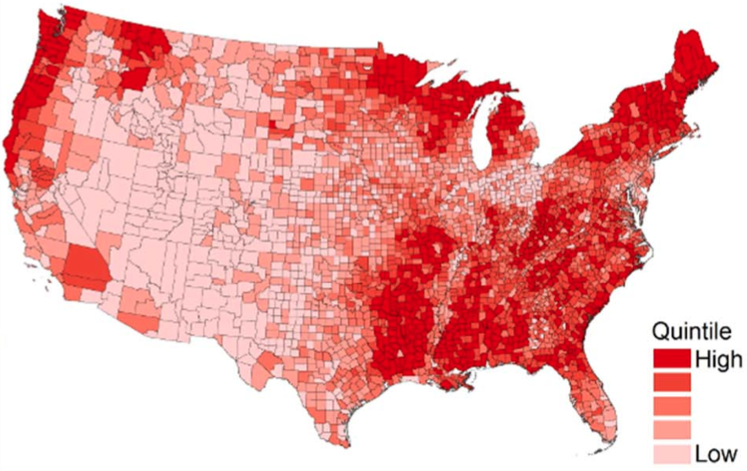For every three gulps of nitrogen pollution that a white American inhales, a compatriot of color sucks down four.
New findings of injustices associated with nitrogen dioxide (NO2) pollution have painted racial environmental inequality in vivid statistical detail. The research, published Tuesday in PLoS One, concludes that reducing NO2 pollution levels for all Americans down to those that afflict white communities could reduce the yearly death toll from coronary heart disease alone by 7,000.
The pollution problem afflicts Hispanic and Asian communities the most, and children and the elderly are the most vulnerable. Such pollution can lead to asthma, heart attacks, and low birth weights. Those who have it the absolute worst are black Hispanics.
“The gaps, unfortunately, are expected, based on prior literature,” says study co-author Julian Marshall, a University of Minnesota associate professor of environmental engineering. “What surprised me is how large the gaps are, and that they’re found throughout the U.S. Even locations with relatively clean air can exhibit large disparities.”
Marshall was part of a team that compared demographic data from individual Census blocks with ground-level NO2 levels that he helped measure in 2011 using satellites. Here are some of the key findings:
- Americans who are not white endure 38 percent heavier NO2 pollution than white Americans.
- Black Hispanics endure 28 percent heavier NO2 pollution than everybody else.
- People living in poverty endure 10 percent heavier NO2 pollution than everybody else.
- Poor white Americans endure 27 percent heavier NO2 pollution than do wealthy white Americans.
Communities of color have long neighbored the power plants and highways that produce the heaviest pollution clouds. So it’s easy to assume that the racial differences in nitrogen pollution are mere highlights from a long list of effects associated with stubborn income inequality. But the new research reveals that the difference has more of a racist sting even than that. Differences between the amount of NO2 pollution to which whites and non-whites are exposed outweigh the differences in such pollution endured by the rich and the poor. Here are two key sentences from the paper:
Within individual urban areas, on average, NO2 concentration disparities by race (after controlling for income) are more than 2 times greater than NO2 concentration disparities by income (after controlling for race). The relative importance of race versus income for environmental injustice increases with urban area size.
Here, shown in vivid red, are the parts of America where the inequality is most severe:

(Map: PLoS One)
“Environmental injustice and inequality do not exhibit clear spatial coherence with respect to regional race or income characteristics,” the authors write.
The team hopes their findings will help public officials tailor remedies to the cities and communities that need them the most.





